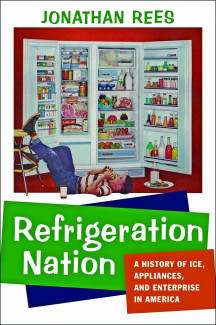
Johns Hopkins UniversityEst. 1876
America’s First Research University
What Makes Convenience Stores Convenient?

I have a confession to make: I wrote a book about the history of refrigeration in the United States, but I didn’t realize that Seven Eleven started life as an ice delivery company until a radio producer told me. To be fair, there were many, many ice companies in the United States during the early twentieth century, but very few of them made this leap (as described on Seven Eleven’s own corporate history web page):
“When a gallon of milk cost 56 cents and ice was sold in blocks rather than bags for ice boxes back in 1927, an enterprising Southland Ice Company employee, “Uncle Johnny” Jefferson Green, began offering milk, bread and eggs from the ice house.
He quickly saw a need to carry these items for customers who were out of these everyday staples. He sold a lot of these items on Sundays and evenings when grocery stores were closed.”
Unlike ice, which ceased to be a viable industry as the home refrigerator became ubiquitous, people always needed bread and milk.
While the Seven Eleven People emphasize the long hours as to what made convenience stores convenient (and that undoubtedly had something to do with it), I think it’s also worth emphasizing the importance of proximity. My understanding is that Texas was the home of the first mobile ice stations. Instead of the ice man delivering ice to your door, starting in the 1920s Texans could drive up to a small satellite ice house and take their ice “to go.” Selling some food to go with your ice made perfect sense if this could save people a trip.
Over the course of the twentieth century, ice machines shrank. The earliest successful ones could fill a warehouse and weighed five tons. Now they are small – small enough to fit outside a typical convenience store. Ian Parker of the New Yorker described the effect of these machines on the ice industry as part of his profile of Texas ice entrepreneur Jim Stuart in 2001:
“[I]n August, 1992, a prototype of today’s Ice Factory was ready to install in a Minimax store in Houston. Stuart was back in the ice business. For the price of the machine, about fifteen thousand dollars, Stuart could now walk straight into a market and start taking customers: no ice plant, no trucks, no labor. (The machine was installed free, but the store picked up the water and electricity costs, and paid for cartridges of plastic bags, at about forty-five cents a bag; a full bag of traditional ice cost about sixty cents.) Suddenly, the hundred-mile-radius rule was irrelevant. A territorial industry lost its sense of territory.”
We all know that convenient stores are convenient for customers, but for businessmen interested in creating ice on site, this was convenient for them too.
My work on the history of refrigeration has emphasized something that refrigerating engineers call “the cold chain,” a long line of technologies needed to preserve and transport perishable food from the point of production to the point of consumption. Thanks to ice machines at chains like Seven Eleven and those in your own household refrigerator, the cold chain for ice cubes is now incredibly short if not totally nonexistent.
No wonder Americans tend to put so much ice in their drinks because it couldn’t possible get any more convenient than that.
Jonathan Rees is a professor of history at Colorado State University–Pueblo. He is the author of Industrialization and the Transformation of American Life: A Brief Introduction and Refrigerator and Refrigerator. His book, Refrigeration Nation: A History of Ice, Appliances, and Enterprise in America is now available in paperback.



